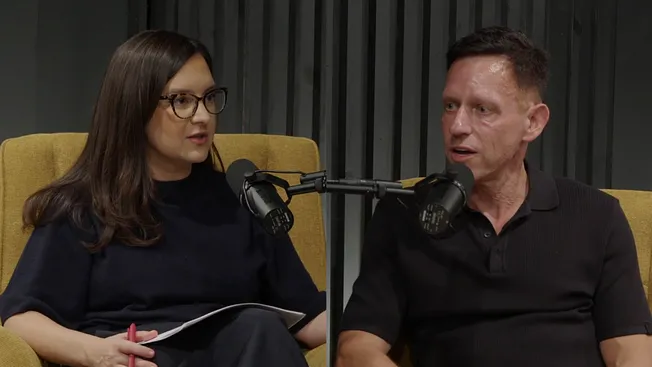Depending on your politics, last week President Joe Biden transformed the lives of millions of young Americans saddled with college debt—giving them a chance to pay down their student loans, buy homes, and, one day, send their own kids to college. Or, last week President Biden saddled a new group—this one not so upwardly mobile—with a much higher tax bill for choices they didn’t make and can’t afford, while plunging our economy even deeper into inflation.
Who is right?
To debate this important subject, we invited two politicians we admire for their willingness to speak candidly and thoughtfully about some of the thorniest issues confronting the nation: Ro Khanna, a Democratic congressman from northern California, whose district encompasses Silicon Valley; and Tim Scott, a Republican senator from South Carolina.
Below, Rep. Khanna makes the case for Biden’s plan—and says he didn’t go far enough. To read Sen. Tim Scott’s argument against the White House, click here.
—BW
Last week, President Biden announced that he will forgive $10,000 in student loan debt for Americans making under $125,000 per year and up to $20,000 for recipients of Pell Grants. Many progressives are celebrating this as a win, but I don’t think it goes nearly far enough.
In order to truly help working- and middle-class Americans, we need to cancel up to $50,000 in student loans. This would help 95 percent of borrowers and do more to improve the lives of those struggling the most.
President Biden has already used the power of the executive branch to pause federal student loan repayments and forgive interest payments on these loans. If he can suspend interest payments—a form of forgiveness—then he can forgive the principal. But we can’t just cancel student debt without also addressing the problems in our country’s education system that have led us to the situation we currently face: $1.7 trillion in student debt.
In America, we have a publicly funded education system for students from grades K-12. But most students recognize that to maximize their chances of having a good-paying job in our modern economy—including in the trades—they still need more than a high school degree. Faced with this monumental decision as early as 16, students begin applying to colleges and work-training programs.
Most 16-year-olds have no concept of just how much higher education will cost them. To pursue it, nearly one-third of all American students need to take out loans to cover tuition and living expenses. Some run into issues with their family or health and are forced to drop out of school after taking out loans. And with the astronomical price of higher education, many are saddled with life-altering debt.
This story—a hard-working student whose dream was upended by debt—affects tens of millions of Americans today. At one point, I was among them, with over $100,000 in loans, having trouble making my monthly payments, and ultimately taking a year forbearance which created even more debt. I repaid my loans thanks to good fortune and opportunities, but not everyone is so lucky. I’m glad that others are getting relief now. The goal should be to make our country better for everyone.
Critics argue that forgiving student loan debt is regressive—that it rewards the wealthy and punishes the poor. Florida Gov. Ron DeSantis captured that perspective perfectly when he said, “It’s unfair to force a truck driver to pay a loan for someone who got a PhD in gender studies.”
They are wrong.
Forgiving this debt is progressive economic policy. An analysis from the Roosevelt Institute found that debt cancellation would most benefit those with the least amount of wealth.
Another argument from detractors is that this will only benefit those who have already been launched. Tell that to the nearly 40 percent of people with student debt who ended up not receiving a degree, and who are more than four times as likely to default on it. Or tell it to the first-generation college graduates who have to take on more student debt on average than their second-generation counterparts.
Student loan forgiveness is also essential to overcome the racial wealth gap: The same Roosevelt Institute study found that canceling up to $50,000 in student loan debt would immediately increase the wealth of Black Americans by 40 percent.
In fact, every American will benefit because forgiving student debt could help reduce the inflation causing so much pain and hardship. Although some economists have raised concerns about the impact this move will have on the economy, Nobel Laureate economist Joseph Stiglitz points out that most people with student loan debt have not been making payments during the pandemic and don’t have the means to repay them. This means there won’t be a rush of new inflationary spending. Instead, people will have more credit in the long run to create a business, start a family, and strengthen our economy.
While canceling student loan debt is key to resolving the current crisis, it does not fix the underlying problems that led to the debt crisis. We need to ensure that we do not find ourselves in another similar situation. The way to do this is to recognize that an adequate education is a right, not a privilege.
With so many Americans searching for educational opportunities after high school, K-12 should be extended to pre-K-14 or K-16, with opportunities to attend either trade school or college. Just as in other western democracies, students in America should be able to attend these institutions at little to no cost, so they can pursue ambitious dreams with less risk. It will also help train Americans to have better skills to make us competitive with rivals like China.
Some critics will surely object. Why spend public funds on student loans, public college, and vocational school when there are other pressing needs for public funding?
The answer lies in how much you think our society should value education. Europe has its answer: Higher education there costs on average less than $2,225 a year. China is churning out millions of electricians, tradesmen, engineers, and scientists by paying for their education. Why do we lag so far behind? Spending on an adequate education, including post-secondary education, must be a paramount priority for our country and people to thrive in the 21st century.










our Comments
Use common sense here: disagree, debate, but don't be a .